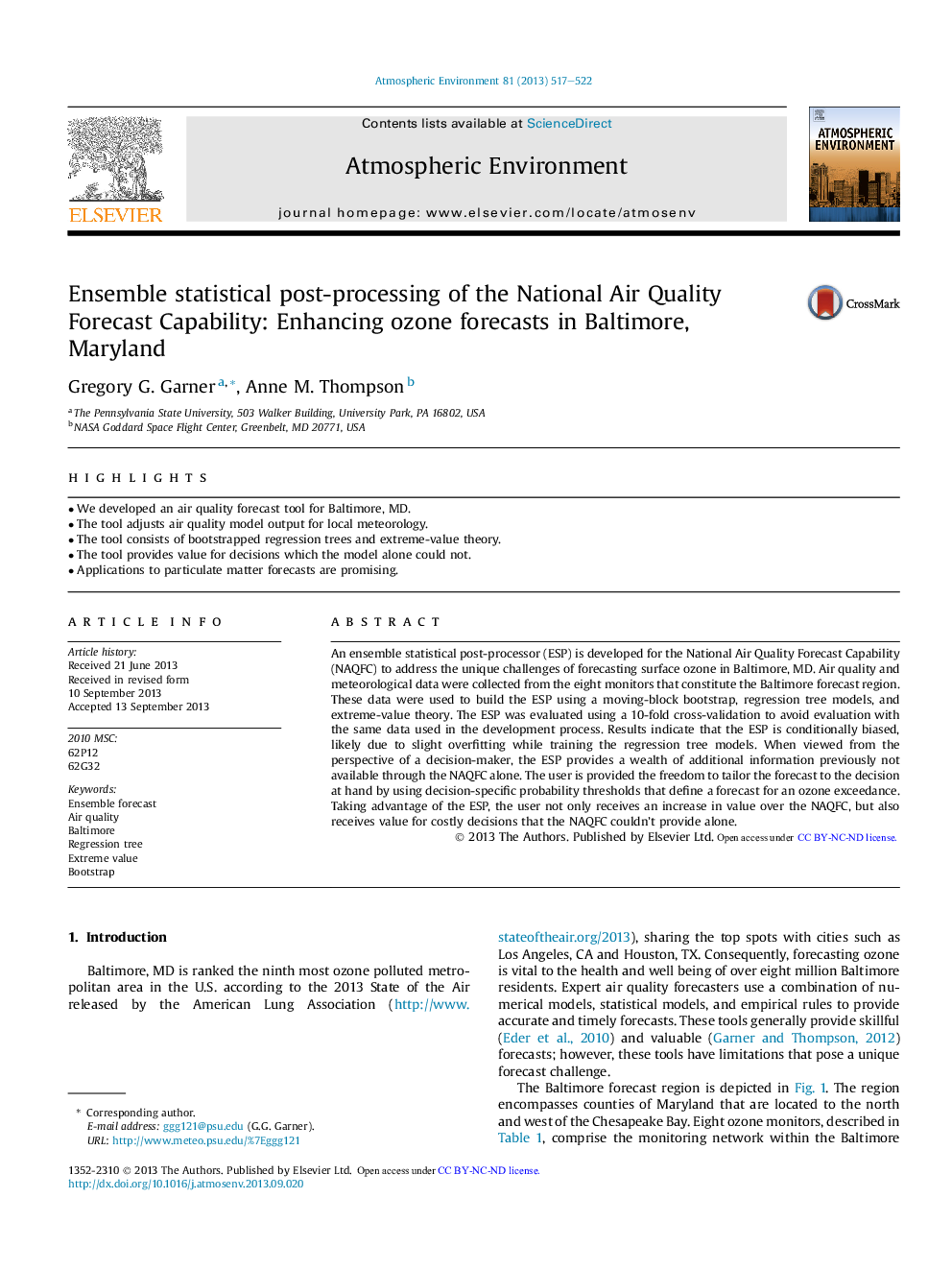| Article ID | Journal | Published Year | Pages | File Type |
|---|---|---|---|---|
| 6340513 | Atmospheric Environment | 2013 | 6 Pages |
â¢We developed an air quality forecast tool for Baltimore, MD.â¢The tool adjusts air quality model output for local meteorology.â¢The tool consists of bootstrapped regression trees and extreme-value theory.â¢The tool provides value for decisions which the model alone could not.â¢Applications to particulate matter forecasts are promising.
An ensemble statistical post-processor (ESP) is developed for the National Air Quality Forecast Capability (NAQFC) to address the unique challenges of forecasting surface ozone in Baltimore, MD. Air quality and meteorological data were collected from the eight monitors that constitute the Baltimore forecast region. These data were used to build the ESP using a moving-block bootstrap, regression tree models, and extreme-value theory. The ESP was evaluated using a 10-fold cross-validation to avoid evaluation with the same data used in the development process. Results indicate that the ESP is conditionally biased, likely due to slight overfitting while training the regression tree models. When viewed from the perspective of a decision-maker, the ESP provides a wealth of additional information previously not available through the NAQFC alone. The user is provided the freedom to tailor the forecast to the decision at hand by using decision-specific probability thresholds that define a forecast for an ozone exceedance. Taking advantage of the ESP, the user not only receives an increase in value over the NAQFC, but also receives value for costly decisions that the NAQFC couldn't provide alone.
